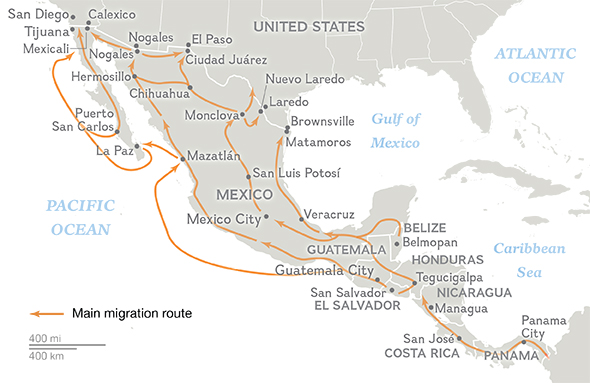The Customs and Border Protection agency’s U.S. Border Patrol is also reporting an increase in families and unaccompanied children apprehended along the southwest border this year compared to last.
According to Javier Urbano Reyes, coordinator of the Master’s Degree program in Immigration Studies at the Iberoamericana University in Mexico City, transporting Central American migrants through Mexico to the U.S. border is “big business.”
Urbano said the trade enriches organized criminals who operate buses disguised as tourist vehicles filled with the migrants, even passing through government checkpoints. A single bus trip up Mexico’s eastern coast from the southern state of Tabasco to Tamaulipas in the north typically must pass through between 10 and 15 checkpoints, he said.
Mexican immigration authorities recently reported finding 102 migrants on two “high-end” tour buses rented by migrant traffickers, who collected between $7,000 and $10,000 dollars per person for passage from the Guatemalan border to Reynosa on the border with Texas, according to the Associated Press.
Urbano said the use of the unregistered buses disguised as tourist vehicles to transport undocumented migrants has been going on “for years” and that the price per migrant can now reach as high as $19,000 dollars.
In a recently released report, the U.S. Border Patrol said that migrants from El Salvador, Honduras and Guatemala “make up the majority” of unaccompanied children and families being apprehended at the southwest border.
The number of children and families apprehended since January is well above levels seen last year, although below historic 2014 levels.
Apprehended families totaled 23,053 from January to May compared to 13,393 during the same period of 2015, while some 21,255 unaccompanied children have been apprehended so far this year compared to 14,845 over the same period last year, according to the border patrol agency.
“We continue to work aggressively to address the underlying causes of illegal migration, to deter future increases, to further secure our border, and to support broader regional efforts to provide avenues for protection of vulnerable populations in Central America,” the U.S. Border Patrol said, noting that 50,000 Central Americans have been sent back to their home countries since Oct. 2, 2015.
Field studies in Mexico show that approximately 50-52 percent of the Central American migrants are men, 40 percent women, 3-5 percent children and 1-13 percent elderly, Urbano said.
He added that migration experts in Mexico are also seeing a relatively new phenomenon: increased entry into Mexico of LGBT migrants from Central America, looking to escape homophobia and violence in their countries.
Central American migrants are fleeing gang violence in their home countries that has grown significantly worse since a 2014 pact to end fighting between the Marasalvatrucha and Barrio 18 gangs fell apart a year and a half ago, he said.
Since then, local businesses in the region have faced increased levels of extortion, while the gangs have extended their territorial reach and stepped up forced recruitment, prompting children and even the elderly to flee, Urbano said.
“We do a lot of work investigating the flow of immigrants,” he said, noting that the most significant change this year is not in the numbers of Central American migrants arriving in Mexico, but in rising violence in their home countries.
“The impact of the violence is very important,” Urbano said, noting, “The final factor is an increase in extortions of local businesses.”
Source: cnsnews.com


